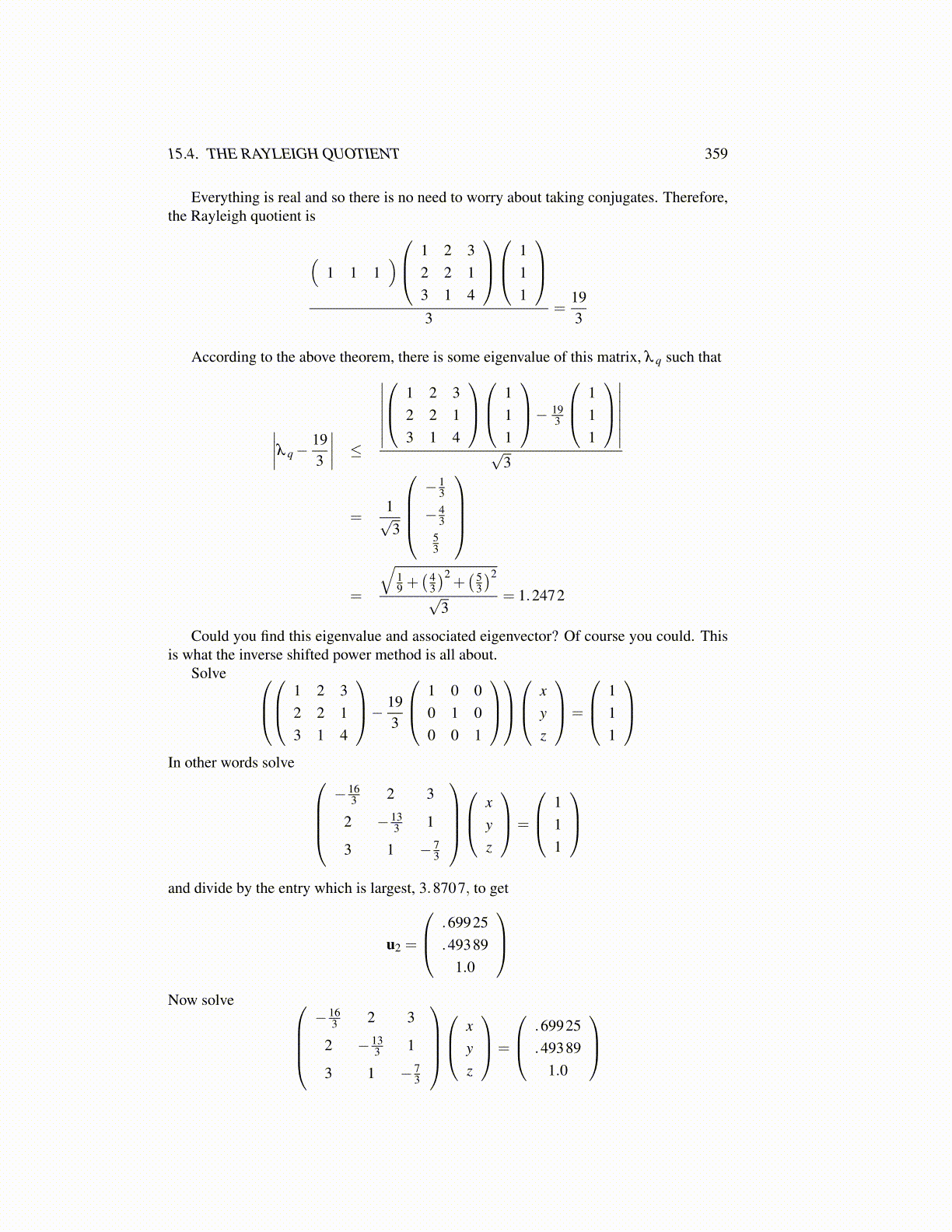
15.4. THE RAYLEIGH QUOTIENT 359
Everything is real and so there is no need to worry about taking conjugates. Therefore,the Rayleigh quotient is
(1 1 1
) 1 2 32 2 13 1 4
1
11
3
=193
According to the above theorem, there is some eigenvalue of this matrix, λ q such that
∣∣∣∣λ q−193
∣∣∣∣ ≤∣∣∣∣∣∣∣ 1 2 3
2 2 13 1 4
1
11
− 193
111
∣∣∣∣∣∣∣
√3
=1√3
− 1
3
− 43
53
=
√19 +( 4
3
)2+( 5
3
)2
√3
= 1.2472
Could you find this eigenvalue and associated eigenvector? Of course you could. Thisis what the inverse shifted power method is all about.
Solve 1 2 3
2 2 13 1 4
− 193
1 0 00 1 00 0 1
x
yz
=
111
In other words solve
− 163 2 3
2 − 133 1
3 1 − 73
x
yz
=
111
and divide by the entry which is largest, 3.8707, to get
u2 =
.69925.49389
1.0
Now solve
− 163 2 3
2 − 133 1
3 1 − 73
x
yz
=
.69925.49389
1.0